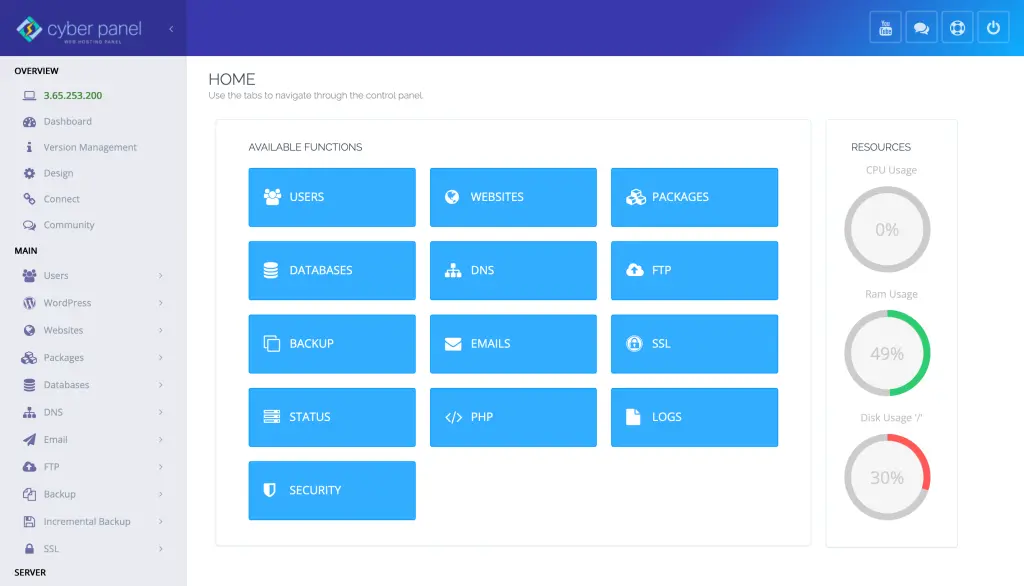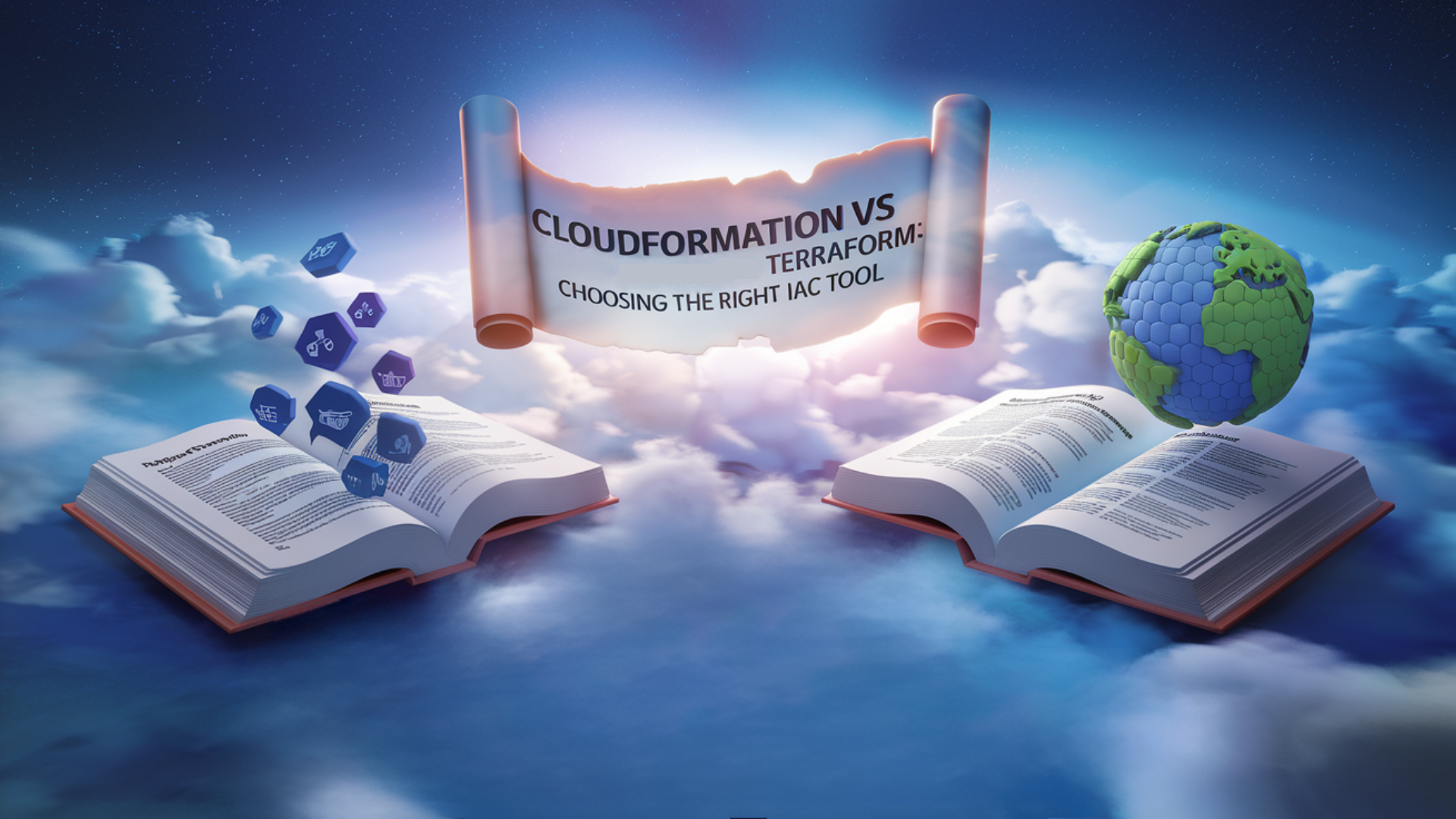Nowadays, it is important to automate infrastructure in the rapidly and ever-changing cloud environments. Cloud resource management is facilitated by IaC (Infrastructure as Code) tools such as CloudFormation and Terraform. You are not alone if you are considering CloudFormation vs Terraform and their differences in case studies. This article will explore the more significant differences, other AWS use cases like AWS CloudFormation and Terraform, and even comparisons like Ansible with Terraform and other comparisons, including AWS CDK with CloudFormation versus Terraform. If you intend to build a one-cloud vs. many-clouds architecture, this article will ensure you know the best tool to use.
CloudFormation vs Terraform
Here is a quick overview of CloudFormation vs Terraform:
Terraform Overview
Terraform is a cloud-agnostic Infrastructure as Code solution based on HCL (HashiCorp Configuration Language). It allows teams to manage infrastructure on providers like AWS, Azure, and Google Cloud, offering unmatched flexibility and modularity.
CloudFormation Overview
AWS CloudFormation is Amazon’s native infrastructure-as-code definition solution. It is JSON or YAML-based. Designed specifically for AWS, it comes with in-depth service integrations, which make it the most suitable choice for AWS-centric projects.
Core Differences: Terraform vs CloudFormation
One needs to realize the core differences between Terraform and CloudFormation when making an educated decision while handling cloud infrastructure. Let us detail CloudFormation vs Terraform:
1. Cloud Reach
Get exclusive access to all things tech-savvy, and be the first to receive
the latest updates directly in your inbox.
Terraform is also well-known for its suitability with multi-clouds. This gives you the flexibility to manage AWS, Azure, Google Cloud Platform, and literally every other provider with one utility. This really is very much the kind of tool that benefits hybrid or multi-cloud organizations heavily.
CloudFormation, however, is AWS-specific. It is heavily integrated with AWS services but does not have native support for other cloud platforms. If you are locked into AWS, CloudFormation can be a natural fit because of its strong integration with AWS features.
2. Configuration Language
Terraform employs HashiCorp Configuration Language (HCL), which is highly readable and user-friendly. HCL is infrastructure-as-code-friendly and is found to be easier to learn and manage, particularly for teams who would like to modularize their infrastructure.
CloudFormation utilizes JSON or YAML, which are both data serialization formats that are widely adopted. While YAML is more human-readable than JSON, intricate configurations will still be verbose compared to HCL.
3. State Management
Terraform keeps a state file, which keeps track of your infrastructure as it exists right now. This helps Terraform to sense changes and control drift easily. But handling and securing this state file is important, particularly in team settings.
CloudFormation handles state internally in AWS. What this implies is that you do not have to care about keeping and safeguarding a state file since AWS will do it automatically. This is more convenient but less visible and controllable than Terraform’s explicit state handling.
4. Community & Ecosystem
Terraform has a rich open-source community and a large third-party plugin ecosystem (providers). This allows it to support not just multiple cloud platforms but also numerous other infrastructure and service providers.

CloudFormation has a smaller ecosystem, but only for AWS services. Although AWS updates it frequently with new features, the frequency and scope of integration are typically narrower than what the Terraform community provides.
5. Extensibility
Terraform is very modular and extensible. You can author reusable modules, implement custom providers, and use its plugin system to integrate it with nearly any service or platform.
Modularity is available in CloudFormation using nested stacks and macros, but extensibility is constrained to what’s provided by AWS. It’s great for the full AWS-only environment, but it isn’t as flexible as Terraform when it comes to integrating with external systems.
AWS CloudFormation vs Terraform: What to Use?
Use AWS CloudFormation when your infrastructure is completely AWS-dependent and you require close integration with AWS services, like easy IAM management, CloudWatch integration, or AWS-specific feature support out of the box. It’s entirely managed by AWS, so it’s a natural choice for teams heavily committed to the AWS environment.
Conversely, select Terraform for the added flexibility when you have environments that are multi-cloud or in cases where consistent workflows are desirable across providers. Its open nature, extensive registry of modules, and ability to handle complex dependencies make it better suited for horizontally scalable, multi-platform infrastructure automation.
Ansible vs Terraform vs CloudFormation
Terraform and CloudFormation are essentially Infrastructure as Code (IaC) tools best suited for provisioning and managing infrastructure resources such as virtual machines, networking, and cloud. Terraform, however, operates on a variety of platforms, whereas CloudFormation is optimized for AWS.
Ansible, on the other hand, is a robust configuration management and automation tool. Ansible is not as much about provisioning infrastructure as it is about installing software, managing services, and orchestrating application deployments.
In reality, these tools are used together:
- Terraform (or CloudFormation) sets up infrastructure,
- Ansible configures servers and deploys applications on top.
- This layered design takes advantage of the strengths of each tool for a more efficient and scalable DevOps process.
AWS CDK vs CloudFormation vs Terraform
AWS Cloud Development Kit (CDK) allows you to write cloud infrastructure in programming languages of your choice, including Python, TypeScript, and Java. This embodies the benefits of object-oriented practices such as abstraction, inheritance, and code reuse so that infrastructure code feels like typical application development. CDK translates this code into CloudFormation templates internally.
CloudFormation, however, employs declarative YAML/JSON templates and is best suited for teams that want a simple, native AWS IaC solution without having to write general-purpose code.
Terraform is cloud-agnostic and has a massive community ecosystem. It supports uniform provisioning across several cloud providers with reusable modules and complex dependency graphs through its declarative HCL (HashiCorp Configuration Language).
When to Use Each
CDK: Suitable for programmers who are already comfortable with writing code and require a high-level, maintainable mechanism to build AWS infrastructure.
CloudFormation: Most appropriate for AWS-only environments managed by teams that have governance requirements and need native integration.
Terraform: A solid choice for enterprises deploying to several clouds or needing reusable, modular templates in a diverse set of environments.
Why Use These Tools?
- IaC tools automate cloud management and deliver consistency and version control.
- Terraform is well-suited to hybrid or multi-cloud deployments.
- CloudFormation and CDK enjoy deep integration within AWS and native support as well as services.
- Combined with tools such as Ansible for deployment and configuration, these systems assist in end-to-end automation from provisioning to software orchestration.
Best Practices
- Create modular, reusable templates to enhance maintainability.
- Regularly validate and test your infrastructure code through CI/CD pipelines.
- Protect secrets and sensitive information in state files with remote backends and encryption.
- Version control your infrastructure with complete documentation to facilitate team collaboration and auditing.
Role of CyberPanel

CyberPanel, i.e., a robust web hosting control panel, complements your IaC pipeline by handling applications once the infrastructure is deployed. With one-click installations, SSL support, and high-level monitoring, it pairs ideally with Terraform and CloudFormation. Whether you’re deploying a web application or a complete stack, CyberPanel streamlines server management so you can innovate.
FAQs: CloudFormation vs Terraform
1. What’s the primary difference between CloudFormation vs Terraform?
Terraform is multi-cloud, whereas CloudFormation is AWS-specific.
2. Can I use Ansible along with Terraform or CloudFormation?
Yes, Ansible is great after deployment for software configuration.
3. Is CDK more developer-friendly?
Yes, CDK utilizes familiar programming languages and hence is easier to understand.
4. Which one is best for multi-cloud in CloudFormation vs Terraform?
Terraform is the best in multi-cloud scenarios.
5. How does state management differ in CloudFormation vs Terraform?
Terraform stores external state files; CloudFormation stores stack state in AWS.
Final Thoughts!
We have done with CloudFormation vs Terraform. Knowing CloudFormation and Terraform puts the decision-making power in your hands for your cloud infrastructure. Go one step further—sync your IaC setup with CyberPanel to ensure deployment and management on a different level!



